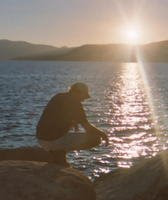You don’t have to be an intellectual to appreciate this “symphony of truth,” however. For Catholicism is, first of all, an encounter with a person, Jesus Christ, who is “the way, the truth, and the life” (John 14.6). And to meet that person is to meet the truth that makes all the other truths of our lives make sense. Indeed, the embrace of Catholic truth in full, as lives like Blessed John Henry Newman’s demonstrate, opens one up to the broadest possible range of intellectual encounters.
Viewed from outside, Catholicism can seem closed and unwelcoming. As Evelyn Waugh noted, though, it all seems so much more spacious and open from the inside. The Gothic, with its soaring vaults and buttresses and its luminous stained glass, is not a classic Catholic architectural form by accident. The full beauty of the light, however, washes over you when you come in.I appreciate Weigel's reflections, but as a convert myself (and having talked with scores of converts over the years; we have a way of finding each other and reveling in our shared experience), I think the journey to the Church is often complicated. I personally converted to Catholicism as a 30-year-old former Baptist-turned-Quaker-turned-Buddhist. In the beginning, I was, like Thomas Merton (whom Weigel mentions), drawn to the aesthetic dimensions of Catholic worship. I fell in love with liturgy and incense and the mystery of it all. Later, I became convinced of the intellectual, moral, and religious truth of Catholic teaching. And of late, I am finally arriving at the ultimate purpose of the Catholic faith experience: a direct, personal relationship with Jesus as Lord and Redeemer.
I guess my point is, each of these historical converts Weigel describes exemplified one of many doorways into the Catholic Church, doors all of us might pass through at some point in our faith formation.




No comments:
Post a Comment